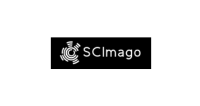INCUBATION PARAMETERS AND POST-HATCH SEXING METHODS IN WYANDOTTE HENS
DOI:
https://doi.org/10.5380/avs.v27i4.85508Palavras-chave:
hatchability, embryonic mortality, storage time, egg weight lossResumo
ABSTRACT - The preservation of breeds and their characterization allows the maintenance of a genomic diversity that can be crucial to face new challenges of sustainability in livestock farming. The Wyandotte breeder has a dual purpose, meat and eggs, besides having docility and rusticity characteristics, favoring its breeding in small and large scales. In this study, the influence of egg storage time on incubation performance and criteria for determining the sex of post-hatch birds were evaluated. Three egg storage periods were adopted: short (0-2 days), intermediate (3-5 days) and long (6-8 days). The total weight loss between storage and incubation was higher for eggs that were stored longer (6-8 days) compared to the other evaluated times. The hatchability rate was better for the eggs that had been stored for less time. The embryonic mortality of eggs with longer storage time (6-8 days), showed a higher number of eggs with early mortality and stillborn. At hatching, it was possible to differentiate the chicks by the abdominal plumage coloration, with the males characterized by yellow coloration from the crop to the cloaca region. The yellow coloration was observed in the female only in the cloacal region. The prolonged storage time negatively affects weight loss of eggs from the Wyandotte breeders, as well as incubation parameters; and the post-hatch sexing can be performed by evaluating the plumage coloration of the chocks ventral area on hatch day.
Downloads
Publicado
Como Citar
Edição
Seção
Licença
Autores que publicam nesta revista concordam com os seguintes termos:
- Autores mantém os direitos autorais e concedem à revista o direito de primeira publicação, com o trabalho simultaneamente licenciado sob a Creative Commons - Atribuição 4.0 Internacional que permite o compartilhamento do trabalho com reconhecimento da autoria e publicação inicial nesta revista.
- Autores têm autorização para assumir contratos adicionais separadamente, para distribuição não-exclusiva da versão do trabalho publicada nesta revista (ex.: publicar em repositório institucional ou como capítulo de livro), com reconhecimento de autoria e publicação inicial nesta revista.
- Autores têm permissão e são estimulados a publicar e distribuir seu trabalho online (ex.: em repositórios institucionais ou na sua página pessoal) a qualquer ponto antes ou durante o processo editorial, já que isso pode gerar alterações produtivas, bem como aumentar o impacto e a citação do trabalho publicado.














